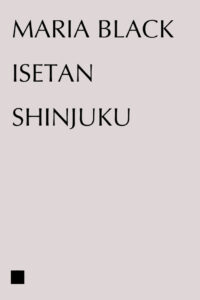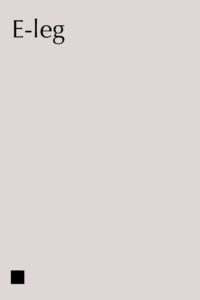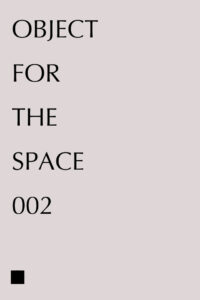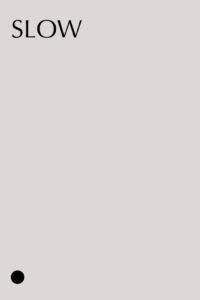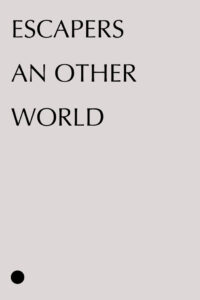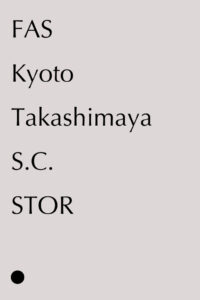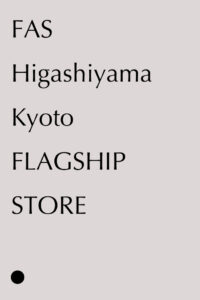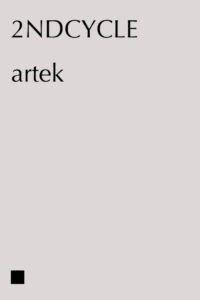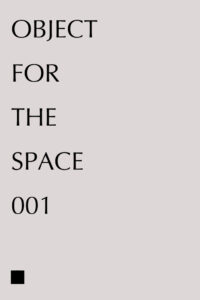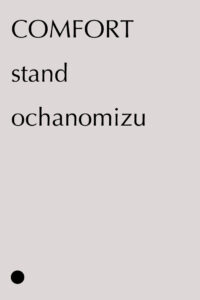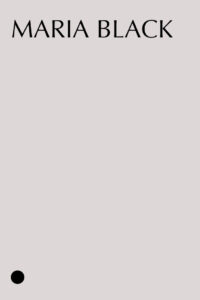OBJECT FOR THE SPACE 002
2025.May| Object for | 00 |
| Address | Harajuku,Tokyo |
| Usage | object |
| size | W1382 D309H1000 |
| Contractor | WRIGHT |
| Collaboration | A MACHINE |
| 00 space design | DAIKEI MILLS |
| Photo | Kazuki Shibuya |
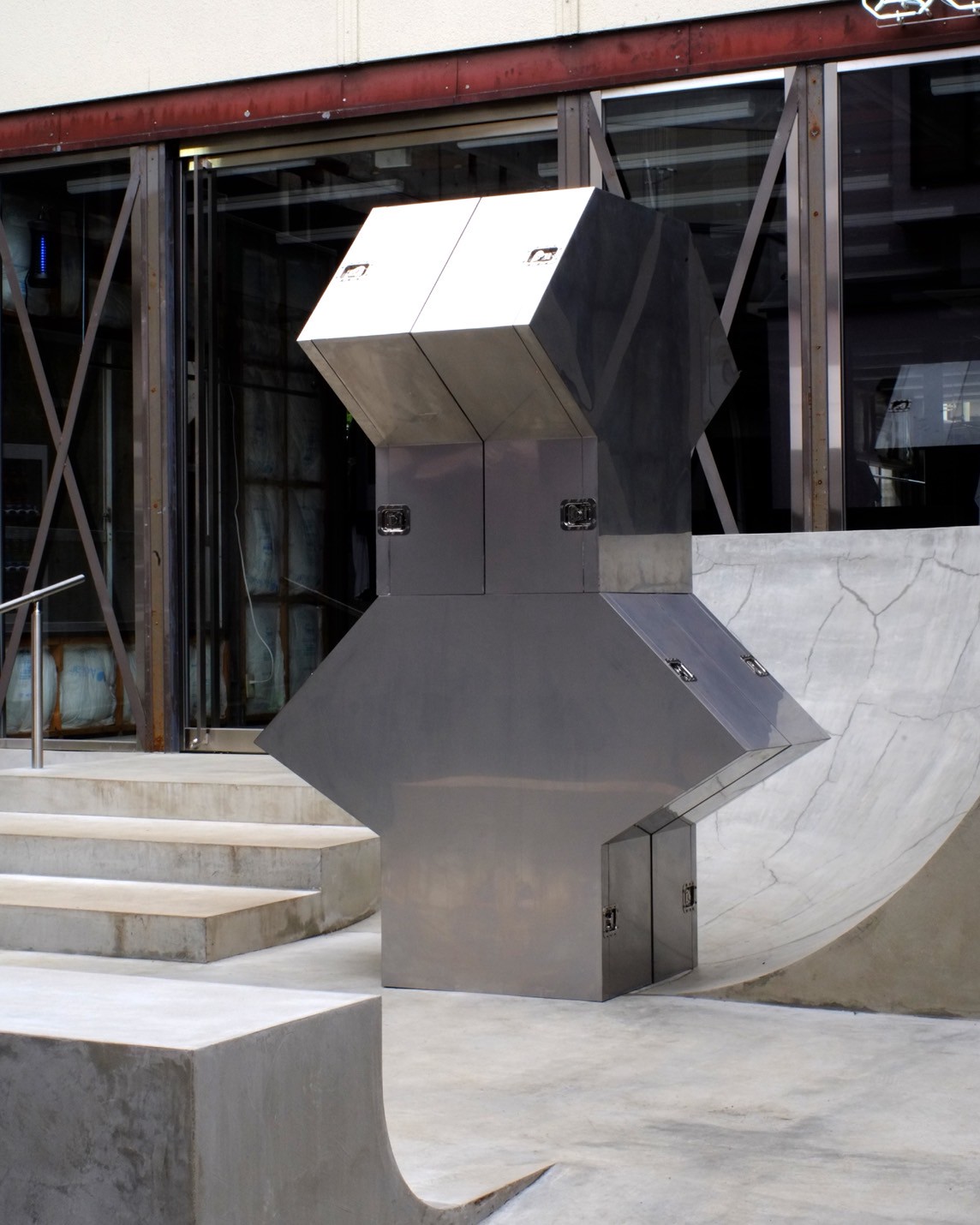
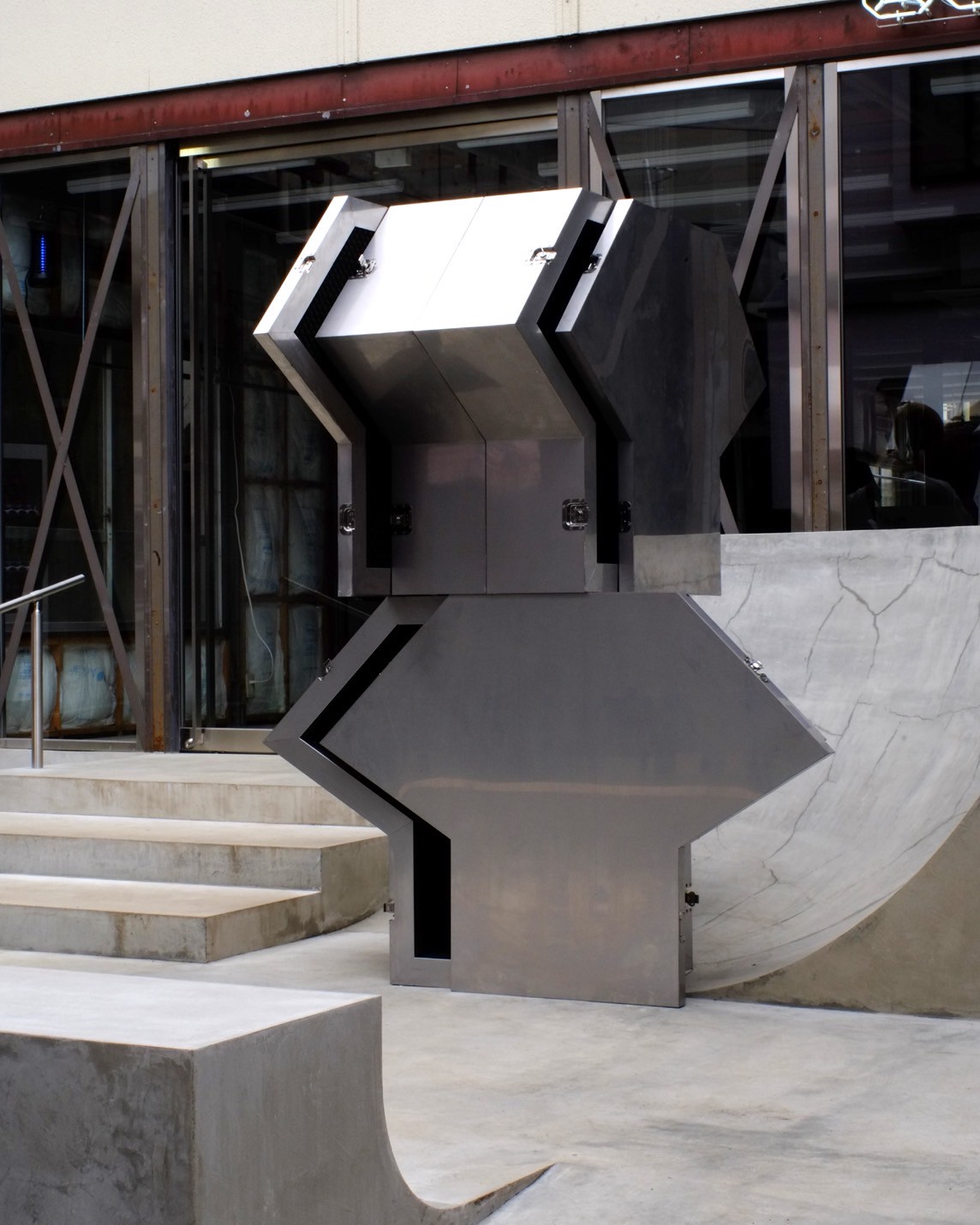
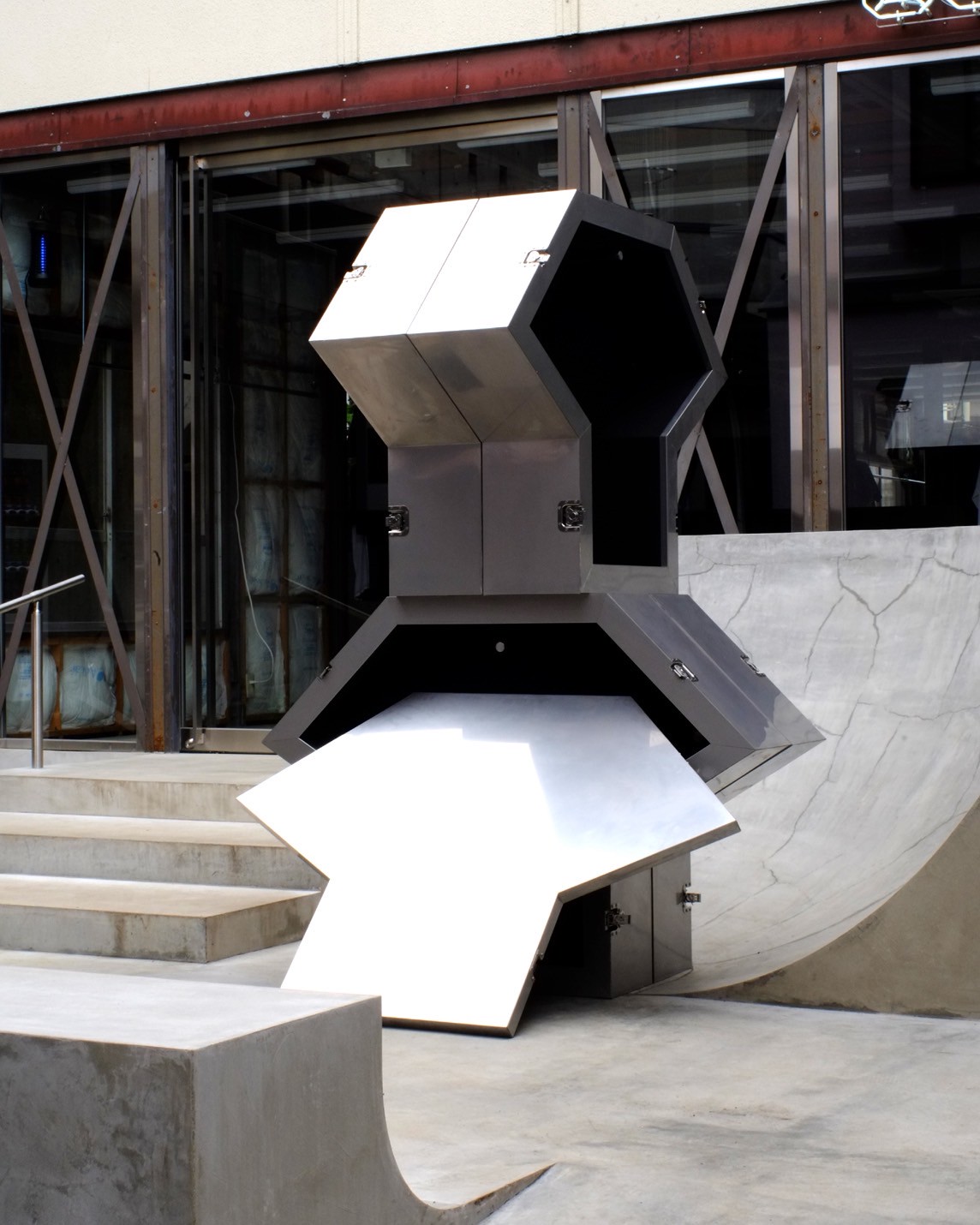
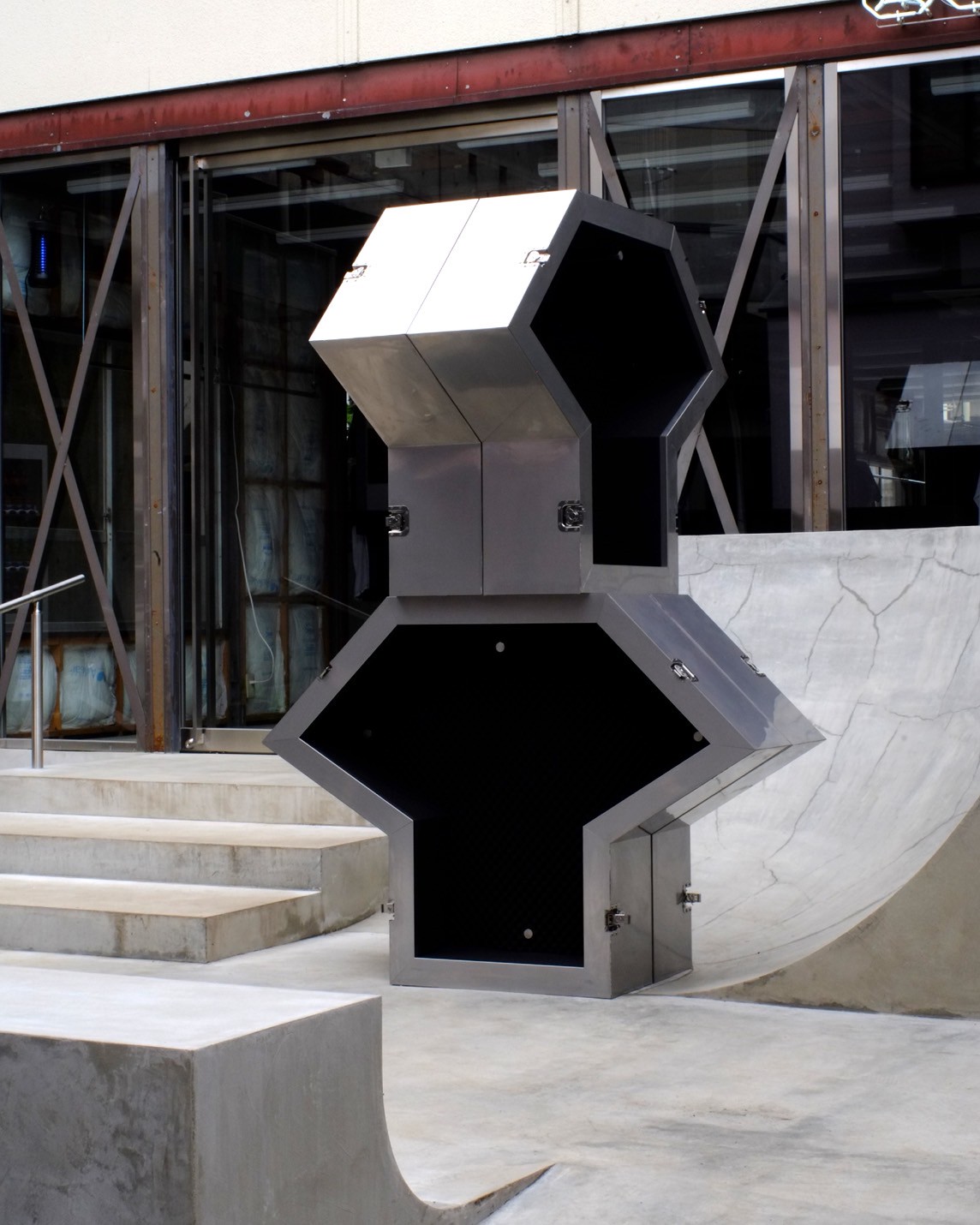
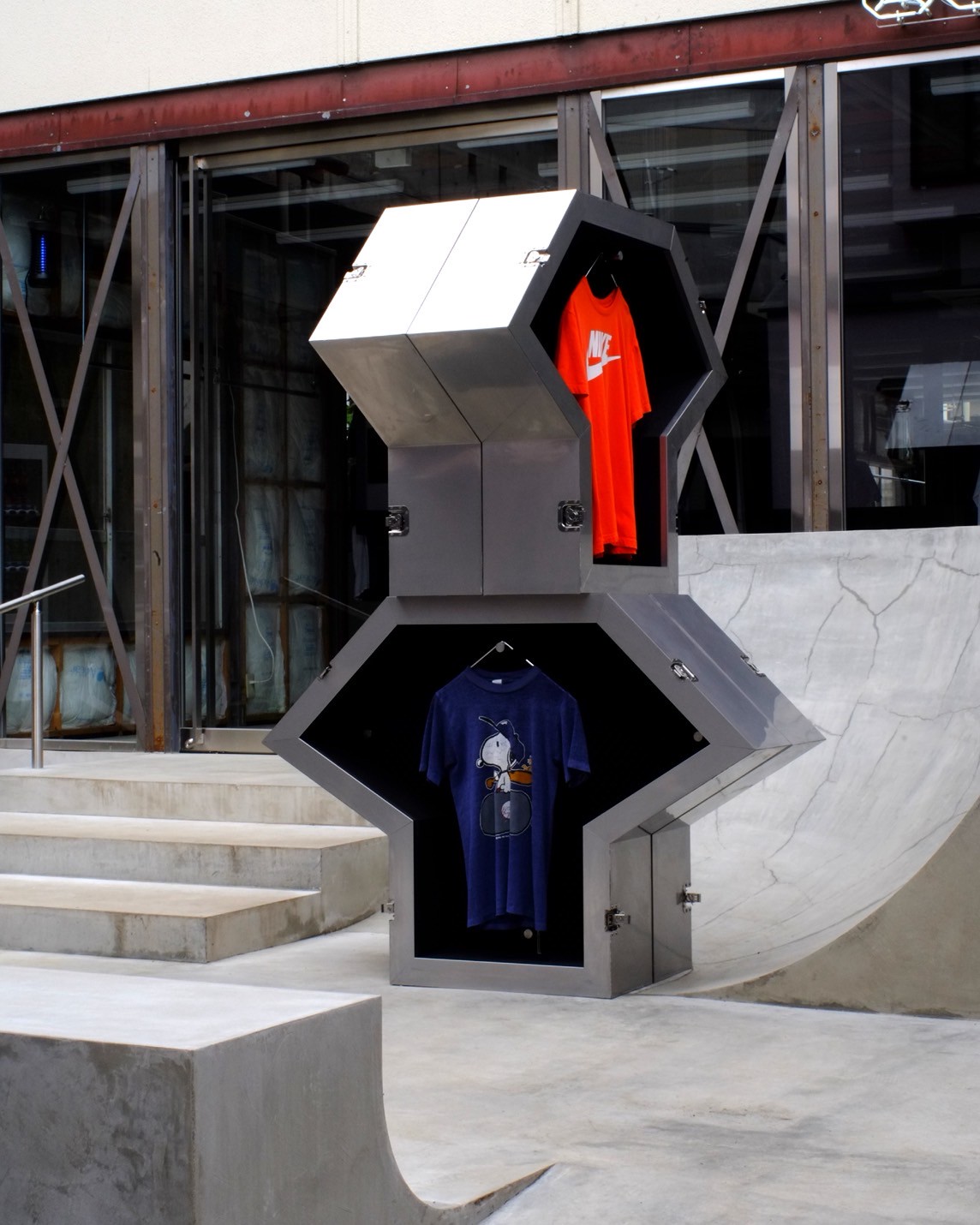
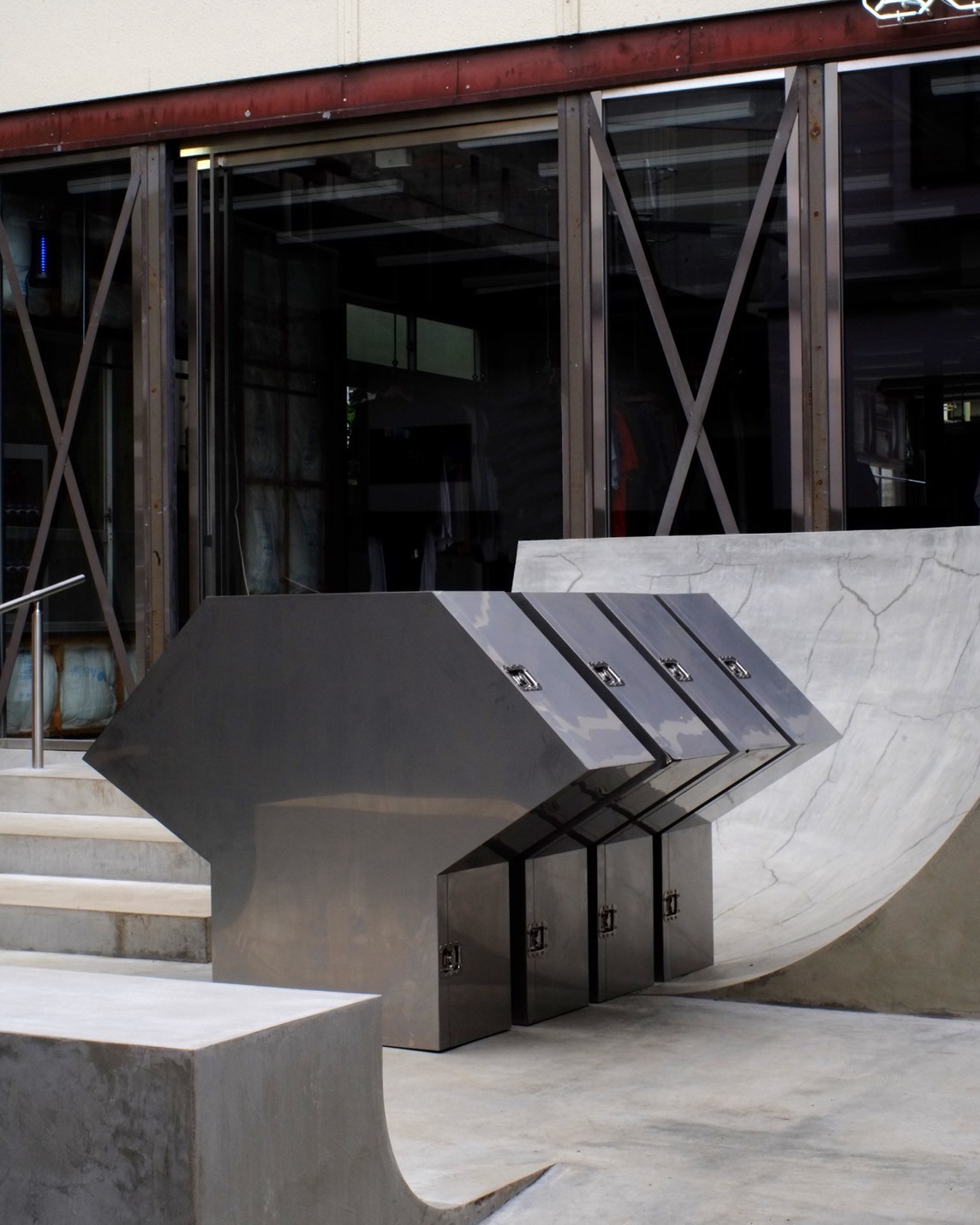
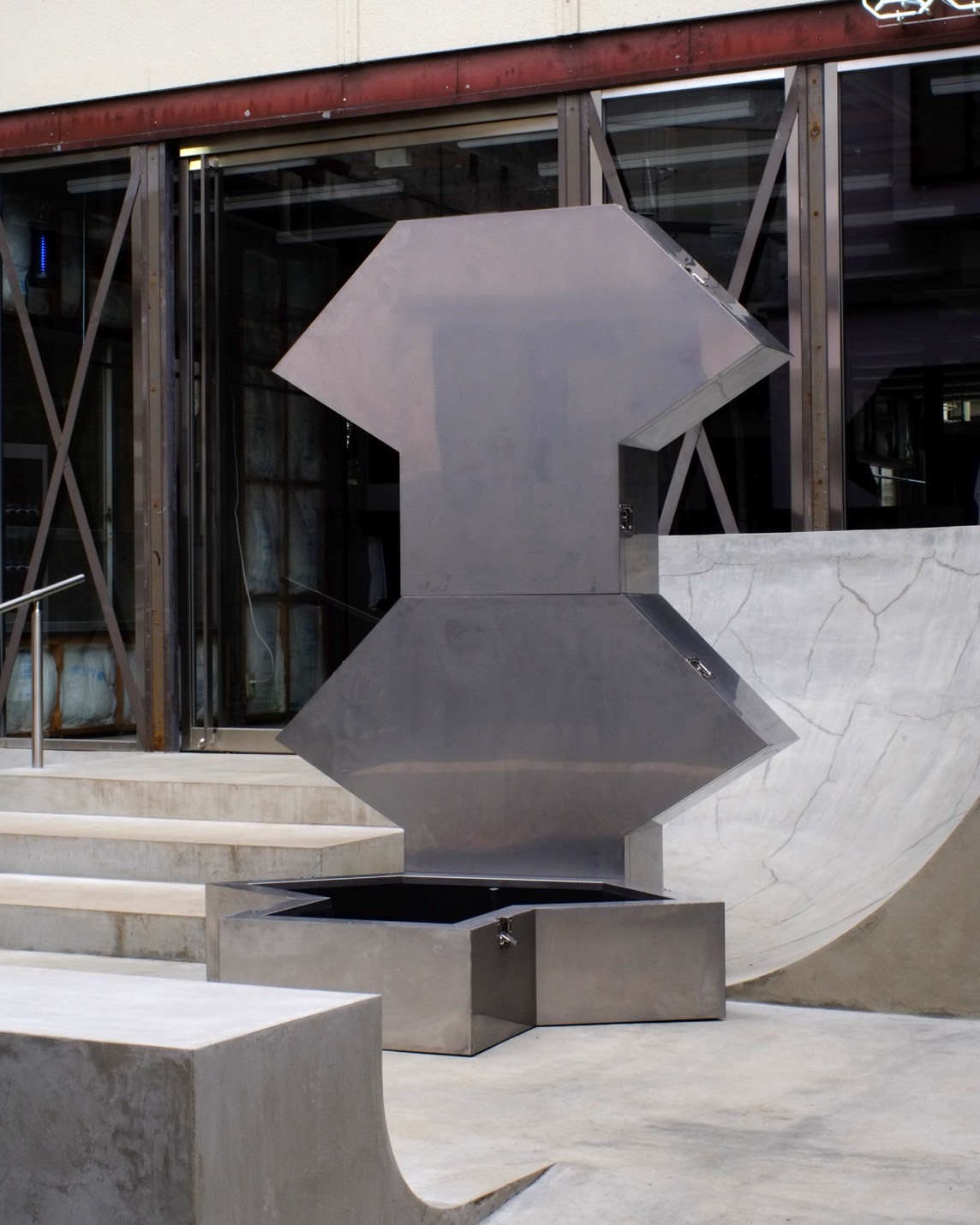
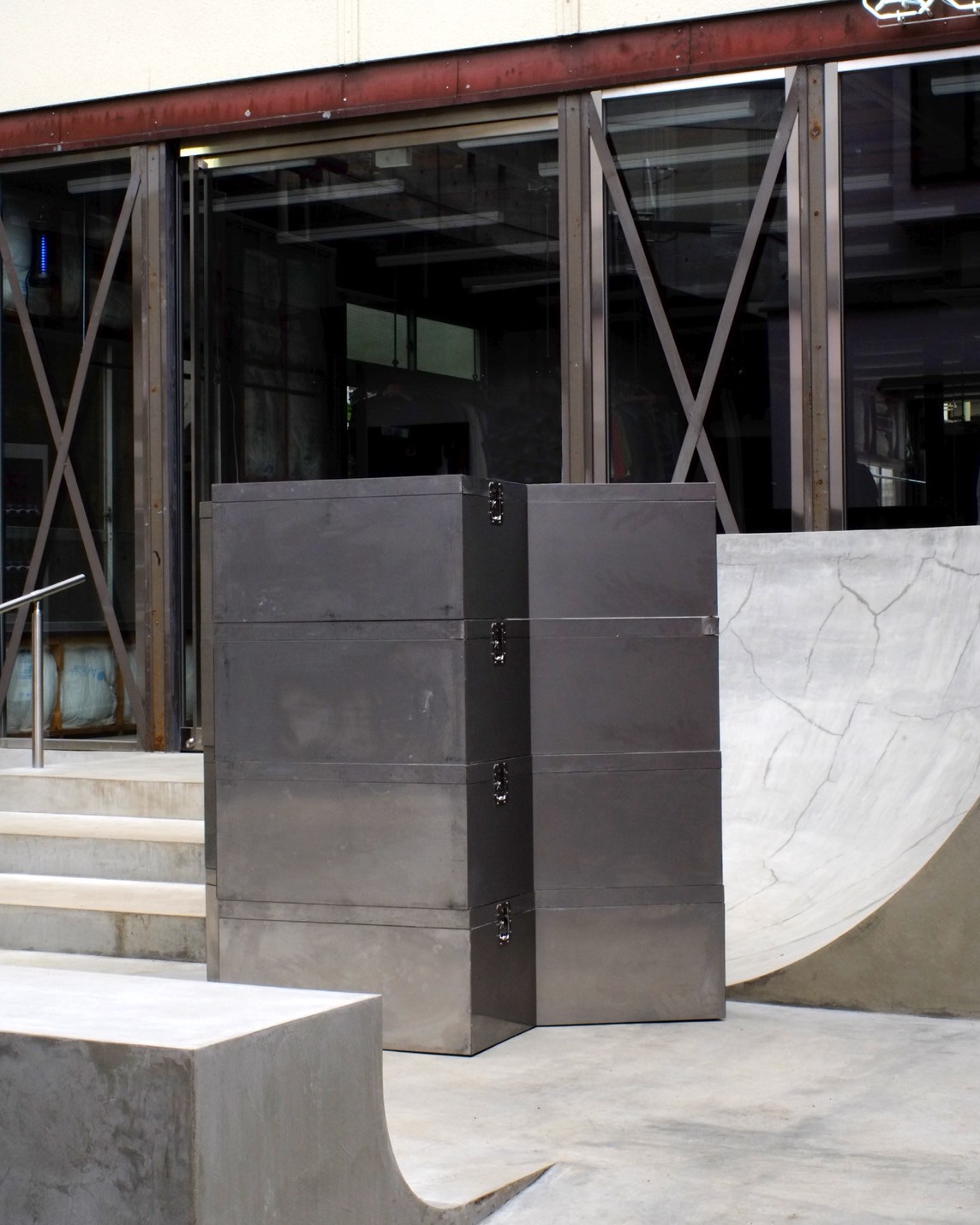
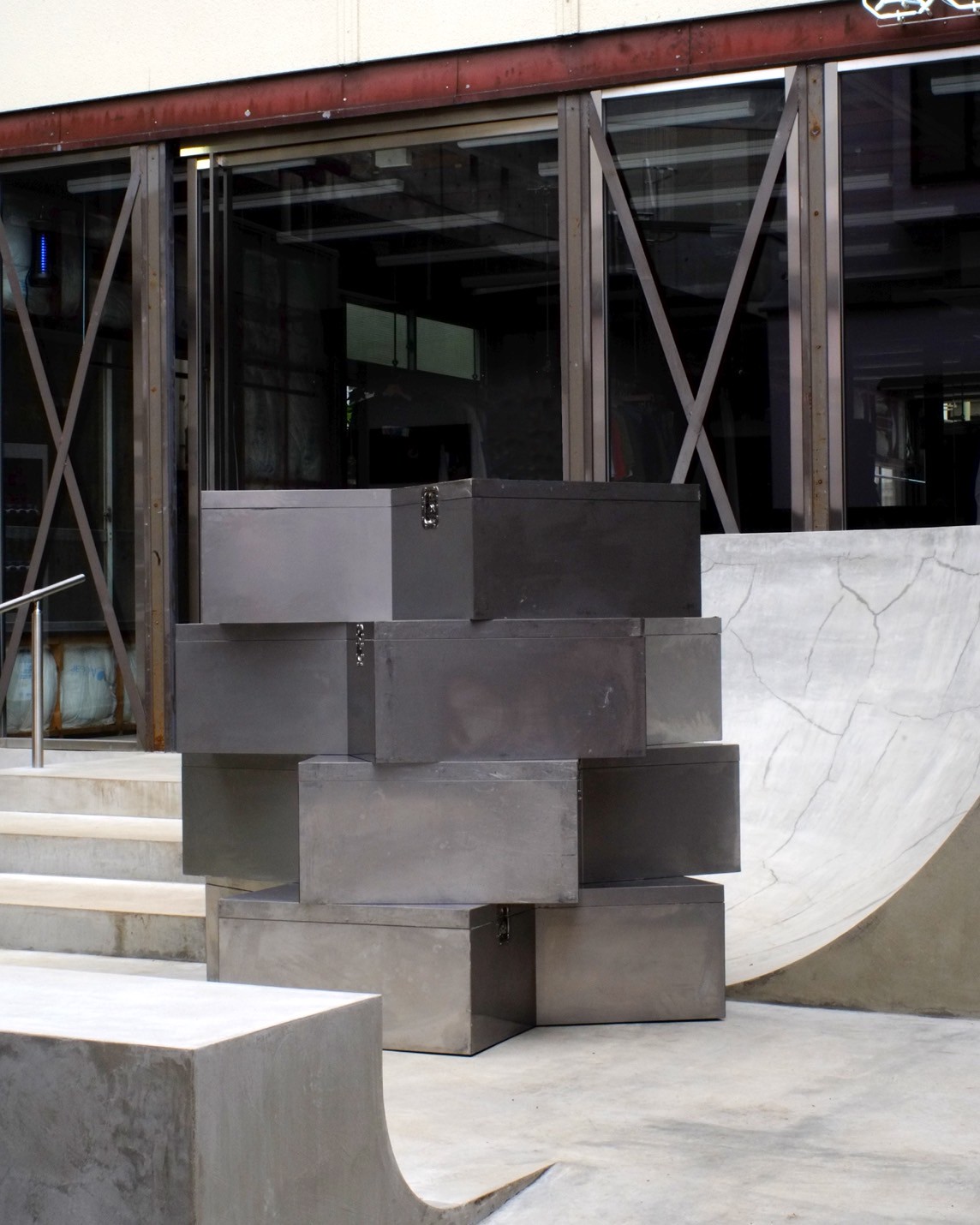

In 1993, a shop opened in Jingumae 4-chome, Shibuya, Tokyo. Mentored by Hiroshi Fujiwara (fragment), who had overwhelming popularity among the youth at the time, and launched by NIGO (A BATHING APE) and Jun Takahashi (UNDERCOVER), this shop’s opening marked a turning point in Harajuku fashion. From that moment, the fashion scene underwent a dramatic shift, ushering in the era of Ura-Harajuku street fashion.
The term ‘street’, now commonly used in everyday language, originates from ‘street culture’. As described by writer and DJ Hiroshi Egaitsu, ‘street culture’ refers to culture rooted in hip-hop, which began in New York in the 1970s, as well as skate culture, which emerged in California around the same time. In the narrow sense, ‘street’ refers to a concept rooted in subcultures that originated in 1970s America, such as hip-hop and skateboarding.
These cultures were transformed into logos and graphics, which became symbols of brands and shops when worn by prominent figures. This gave rise to a new wave in the fashion industry. In particular, T-shirts printed with iconic graphics accelerated consumption in the apparel market, and the term ‘street’ became widely adopted in the mainstream apparel market.
The symbolic nature of street fashion brought new characteristics to the fashion landscape, but it also gave rise to challenges, such as a disconnect in context caused by the blurring of lines between a brand or artist’s creative identity and the symbolic elements associated with street culture.
In this project, aiming to propose a renewed vision of street fashion originating from the backstreets of Harajuku (Ura-Harajuku), we created an object that archives T-shirts—a symbolic item of Ura-Harajuku street fashion—with the motif of a “T-shirt grave,” rather than fixating on their symbolic meaning.
1993年、渋谷区神宮前4丁目にとあるセレクトショップがオープン。NIGO氏(A BATHING APE)、高橋盾氏(UNDERCOVER)らが始めたセレクトショップがデビューして以来、それまでの原宿ファッションが一変し、時代は裏原ストリートファッションへと大きく変化していく。
現代では世間一般的に用いられる「ストリート」という言葉は、「ストリートカルチャー」が起源とされる。「ストリートカルチャー」とは、文筆家/DJの荏開津広が言うように、「1970年代にニューヨークで始まったヒップホップを中心としたものや、同じく70年代にカリフォルニアで生まれたスケート・カルチャーに根差すカルチャー」を指す。つまり狭義の「ストリート」とは、ヒップホップやスケートボードといった、70年代アメリカ発のサブカルチャーを起源とする概念だ。
それらの文化はロゴやグラフィックに形を変え、プリントや刺繍が施された洋服を著名人が着ることでブランドやお店の象徴となり、ファッション業界に新たな潮流が生まれた。特に象徴的なグラフィックがプリントされたTシャツはアパレル市場の消費を加速させ、「ストリート」という言葉は一般的なアパレル市場にも浸透した。
ストリートファッションの記号性はファッションに新たな特性を与えたが、ブランドやアーティストの持つ作家性や独自性との混同による文脈の分断などの課題も生んだ。
本企画では原宿裏通りで新たなストリートファッションの模索するため、裏原ストリートファッションの象徴であるTシャツの墓をモチーフとし、記号性を固定せず、Tシャツをアーカイブするオブジェクトを制作した。
